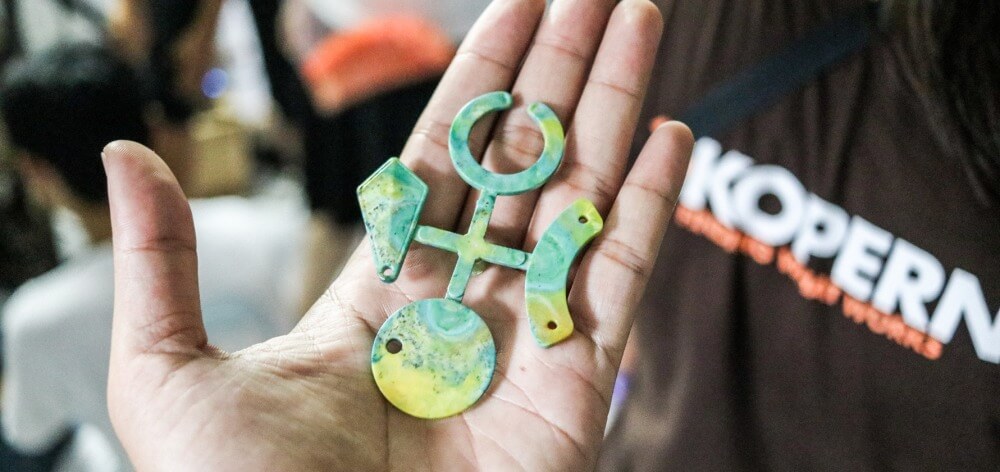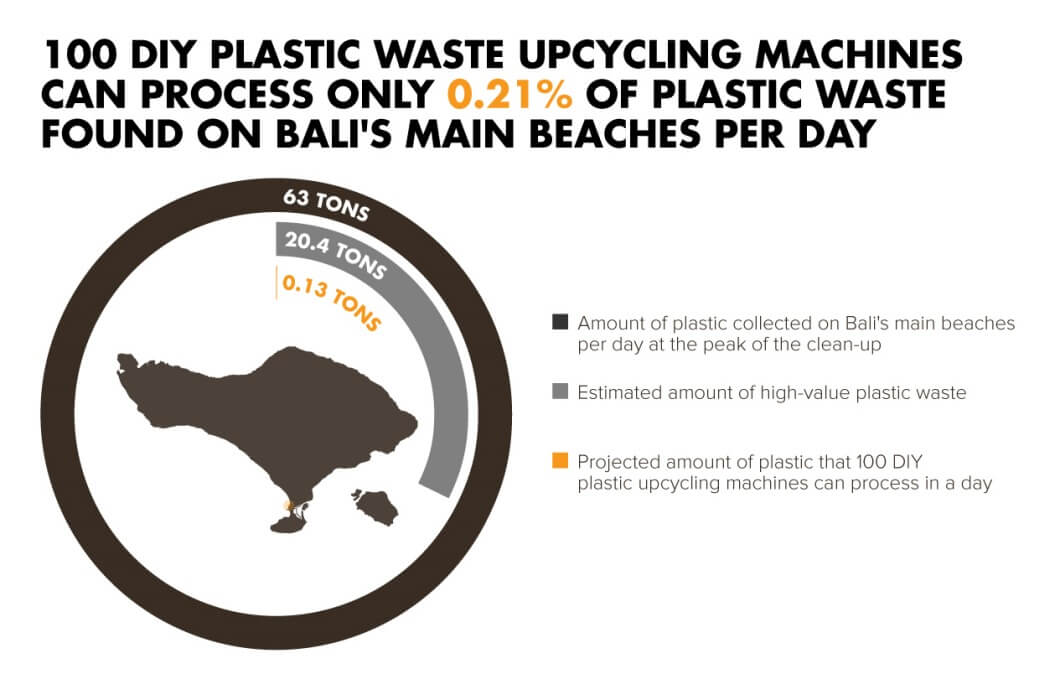
It is estimated that up to 110,000 tonnes of plastic waste enters Bali’s waterways on an annual basis.1 Some of it eventually ends up on the island’s beaches. In fact, at the peak of the clean-up efforts last year, 100 tons of trash were collected daily from the 3.7 mile stretch of the popular southern beaches alone.2 Based on Udayana University and CSIRO research, plastic waste accounts for 63% of beach waste3, of which 39% is low value (food wrappers, labels, plastic bags), 32% is high value (plastic bottles, containers, cups and lids) and 28% holds no value (straws, sheets and other types of soft plastics)4 in the current value chain of plastic recycling industry in Indonesia.

At the peak of the clean-up efforts last year, 100 tons of trash were collected daily from the 3.7 mile stretch of the popular southern beaches alone (Photo credit: Sonny Tumbelaka/AFP)
The Kopernik team recently conducted an experimentation project to assess the viability of a small scale do-it-yourself (DIY) processing technology to create sustainable community-level business opportunities from upcycling plastic waste. The experiment showed that the locally-made injection machine can produce a profitable product from the plastic waste collected in Bali, demonstrating early economic potential of the technology, but what about its impact on waste reduction?
The current design for the small-scale DIY injection machine that Kopernik tested can process around 1.35 kg of high value plastic waste5 per day. If 100 small businesses were to build this type of injection machine they could collectively remove up to 135 kg of high value plastic waste from the beaches per day at its current production rate. This would account for only a 0.7% reduction in high value plastic waste or a 0.2% reduction in the overall plastic waste found on Bali’s main beach.

It is therefore unlikely that the small-scale DIY plastic processing machines can make a significant dent in the volume of mismanaged plastic waste. Nonetheless, this affordable technology is still a valuable resource which does have the potential to create income opportunities for waste-stricken communities. It can potentially make a more meaningful contribution in remote areas where the problem is smaller in scale and no commercial or government-funded waste management solutions exist.
Additionally, through this experiment we’ve observed the technology’s ability to serve as an educational tool that brings a community’s attention to the issue of plastic pollution. Therefore, perhaps, the greatest value of these machines is the potential spillover effect that can create a better understanding and appreciation of the importance of reducing and effectively managing plastic waste.

Going forward Kopernik is further exploring education and behavior change as methods to improve waste management practices and policy, starting with the island of Bali. Read more about our upcoming edutainment series called Pulau Plastik, or Plastic Island.
2 Bali beaches vanishing under TONNES of plastic rubbish.
3 Riset Membuktikan Ini Jenis Sampah Laut Terbanyak di Pesisir Bali.
4 Type of plastic wasted found: Riset Membuktikan Ini Jenis Sampah Laut Terbanyak di Pesisir Bali.
Value category: Kopernik categorized based on plastic waste price in temesi recycling
5 The type of plastic that can be processed with this type of machine is limited to mainly high value plastic waste.


